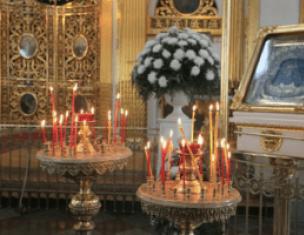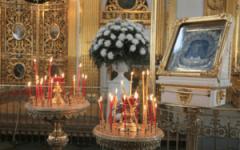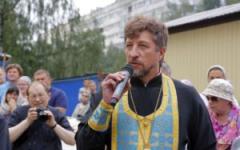Summary of a speech therapy lesson in the senior group for children with speech disorders
TOPIC: Words denoting the actions of objects.
GOALS:
Educational:
- practical learning by children of words denoting actions,
- developing children’s ability to ask questions about words and answer them.
Corrective:
- development of general, fine, articulatory motor skills, facial expressions, voice,
- development of phonemic hearing,
- development of attention, memory, thinking.
Educational:
- nurturing interest in the activity,
- developing self-control over your speech,
- fostering a friendly attitude towards each other.
EQUIPMENT: story pictures, signal cards, pencils, sheet of paper, “magic bag”, toys, ball.
PROGRESS OF THE CLASS:
1. Organizational moment.
- Today in class we will show and name many different actions, movements, ask questions and answer them.
Smile at each other and say:
We will study, we will try.
Give correct answers and help each other!
2. Speech therapy gymnastics.
- We raise our hands up, and then lower them,
and then we’ll separate them and quickly pull them closer to us.
- We raise our eyebrows up and then lower them.
We puffed out our cheeks, we sucked in our cheeks.
- They were surprised, smiled, got fat, lost weight,
They sat down quietly.
- We massage the fingers (we call each finger).
- Facial massage (we name parts of the face).
- Exercises for the lips (A-O-U-I - “we say” without a voice, in a high voice - “fox song”, in a low voice - “bear song”)
- Charging for the tongue.
3. Development of phonemic hearing.
Toys on display include a doll, a train and a hammer. How does a doll cry? (Ah-ah-ah.) What did we say? (Sound.) How does the train whistle? (Uh-uh.) Is it a sound or a word? (Sound.) How does the hammer knock? (D-d-d. This is also a sound.) Say the words for the names of the toys.
Sticks are placed on the board to represent each word spoken.
We named a lot... (words).
Stripes symbols of words are displayed.
Look at the stripes, these are houses of words. We will denote words with these stripes. Do you remember what words are made of? (From sounds.) Make a cup with your hands, collect the sounds and say the word.
The speech therapist pronounces the words slowly, in a whisper, and the children speak loudly and in unison.
Kuuklaa, mmyachiik... (doll, ball). How do we designate sounds? (In circles.)
Open your pencil cases, take a red circle in your right hand, and a strip like this in your left hand. What do we mean by this stripe? (Words.) If I say a word, raise the bar, and if you hear a sound, raise the circle.
The speech therapist pronounces vowel sounds and words, and the children show the corresponding symbol.
4. Work on the topic.
The speech therapist gives the children the following task:
- Nastya, draw!
- Children, tell me in one word, what is Nastya doing?
Children: - Draws.
Speech therapist: - Artem, jump on one leg!
- Children, tell me in one word, what is Artem doing?
Children: - Jumping.
Speech therapist: - Vika, throw me a ball!
- What is Vika doing?
Children: - Throws it away.
Speech therapist: - Roma, clap your hands!
- What is Roma doing?
Children: - Claps.
Speech therapist: - Children, you named a lot of different words. To these words you can ask the question “What does it do?” All these words mean different actions. We will call them action words.
The speech therapist names action words, and the children ask these words the question “What does it do?”
- He cooks, sews, barks, sleeps, swims, writes, laughs.
5. Physical education
Game “We won’t tell you where we were, but we’ll show you what we did.”
6. Practical mastery of singular and plural verbs.
Speech therapist: What did we do? (Danced, washed, cleaned, swam.)
We called action words.
7. Fixing the material.
- Game “Who does what?”
Speech therapist: - Children, look at each of your pictures and answer in one word the question “What is he doing?”
Children take turns naming action words: knitting, cooking, running, barking, washing, reading.
Speech therapist: - Children, what question can you ask about words-actions?
Children: - What does he do?
- Game "Magic Bag".
Speech therapist: - Children, take one object out of the magic bag and tell me in one word what it can do?
Children take out toys: a car, a ball, a bell, an airplane, a hedgehog, a teddy bear, and name action words: rides, jumps, rings, flies, pricks, growls.
8. Summary of the lesson.
Speech therapist: - What did we talk about in class today? What did you like most?
- And now we will stand in a circle, hold hands, smile at each other and say: Thank you for your good work.
Methodological development: Subgroup speech therapy session in the ONR preparatory group (second year of study).
Topic: “Journey to the Land of Letters”
- Summarize acquired knowledge about sounds, letters, syllables, words-objects, words-actions, words-attributes and sentences.
Learning task:
- Summarize children's knowledge of vowels and consonants.
- Continue to develop the ability to divide words into syllables and develop the skills of reading words and syllables.
- Continue learning to compose sentences with a given number of words.
- Reinforce the concept of “word-object”, “word-action”, “word-attribute”.
Developmental task:
- Develop coherent speech (monologue and dialogic forms), consolidate the ability to answer questions with a common sentence, develop phonemic awareness, enrich the vocabulary, develop attention, memory, and thinking.
Educational task:
- To foster curiosity, creative activity, to develop children’s skills: to work in a team, to patiently listen to questions from teachers, to the answers of comrades and to respect their opinions, to cultivate a sense of mutual assistance and help, to cultivate interest in classes and love for their native language.
Equipment:
- Picture of the country “Certificates”, “codes”, cards with words, simple pencils, colored pencils, cards with letters, colored stickers (shapes), Stickers (colored geometric shapes) are pre-attached to children’s clothes.
Progress of the lesson
L: Guys, today we are going to the magical land of Gramota. (Showing a picture of the fairyland of Gramota). To get into it, we need to open the magic castle. In order to approach the castle, I will ask everyone a question. We will work as a team and help each other.
Ball game
The speech therapist throws the ball to the child and asks a question.
Which letters do not represent sounds? (b, b).
What letter does the beginning of a sentence begin with? (Capitalized)
What letter are first and last names written with? (Capitalized)
What sign is put at the end of a sentence? (Dot)
Which letter looks like a beetle? (letter "F")
Which letter looks like a four or an upside down chair? (letter "H")
What sounds are the most drawn-out, melodious? (Vowels)
How to determine the number of syllables in a word?
L: Well done! Everyone completed the task. Now we will use the key to open the gate to the land of Letters.
Finger gymnastics “Key”
The lock on the door is weird. (Show the “lock” with your hands.
No way to open it! (Try to forcefully twist and open your fingers several times).
I took out a bunch of keys (shaking hands).
Well, hurry up and get the key! (Alternately scroll the finger of one hand in the fist of the other, then change hands).
Door, open quickly! (Unclasp your hands). Come in, please!
L: Well done, guys! So we found ourselves in the country of Letters.
And here is the first task. Take your seats at the table.
The task is called " Cryptographer"Each of you has a card with a confusing word, you need to unravel it and print it in your notebook.
KCHOSCHEN - puppy. (Next to each word there is a picture hint).
Then the task is given to draw a color sound-letter diagram of the word.
Check in progress.
L: Good guys! Now we will enter the clearing of proposals. Children who can cope with the following task will approach me:
- Think of a word with three sounds.
- Think of a word with four syllables.
- Come up with a sentence of five words.
- Name two action words.
- Name two characteristic words.
- Make up a sentence of two words.
The children, having answered the question, leave the table and approach the speech therapist.
L: Here is a new task. We are with you in the clearing of proposals. You will need to read the words and make a sentence out of them. You will work in pairs. Think about how you can unite.
(The speech therapist suggests finding a pair using the same color stickers).
Children make up sentences and read them. (Each pair of children is given cards with words. The children read them and make up a sentence.
and Katya, Vanya, walked in the green forest. ———
Katya and Vanya walked in the green forest).
Fizminutka
L: Now we will remember what sounds our names (surnames) begin with and draw the letters denoting these sounds.
(Children depict the letters: ZH, K, R, F, CH. Etc.)
L: Guys, another task awaits you. Find yourself a partner, we unite according to form. Look at the cards, consult and find the extra letter, explain your choice.
A I E P O R L K N Z V F C Ъ A ZH SCH Y
L: You did a good job! Our journey has come to an end. We'll be back. Magic words will help us with this.
Game "Living Words"
Each child is given a card with a letter depicted on it. The speech therapist pronounces the word (5-6 sounds). Children make up a word. A sound-letter analysis of the resulting words is carried out.
L: Did you enjoy the trip? You have completed all the tasks! Soon you will go to school and will travel to the country of Letters very often. I would like to wish you success!
Karushkina Alena Alexandrovna,
teacher speech therapist
Summary of frontal speech therapist session
with a group of 1st grade students (ONR Shur.)
Lesson topic : “Words denoting the action of an object.”
Purpose of the lesson:
Tasks:
Development of the ability to identify words denoting the action of an object, based on its lexical and grammatical meaning.
Development of the ability to ask a question to an action word.
Graphic designation of action words.
Differentiation of words-objects and words-actions.
Enrichment of the verbal dictionary due to the formation of verbs from onomatopoeic words.
Development of motor skills.
Development of visual, auditory attention, selective inhibition.
Speech development.
Development of attention, memory, thinking.
Expanding and improving students' vocabulary.
Development of visual perception and attention.
Formation of the ability to accept a learning task.
Formation of adequate self-esteem.
Equipment:
music Center;
disc “Sounds of Nature”;
printed copybooks;
prizes.
Progress of the lesson:
"Kwa-kwa-kwa" yes "r wa-kwa-kwa"?
Jumper-coward,
The tail is short,
Eyes with a braid,
Ears along the back
Fur coat in two colors -
For winter and summer.
Who clicks his teeth and clicks?
Wandering near the village...
Lives in a hole
Gnawing on crusts.
small legs,
He is very afraid of cats.
Who, having forgotten worries,
Sleeps in a den in winter?
2). Name all the guess words.
3). What do these words mean?
Which subjects?
What question do these words answer?
4). What fairy tale are these animals from? Mouse-Norushka, Frog-Frog, Bunny-Run, Wolf-Teeth Click and Bear?
Children say hello.
FROG
HARE
WOLF
MOUSE
BEAR
Children remember and name guess words.
Items.
Alive.
Who?
"Teremok"
II . Main part
Activation of the dictionary, clarification, enrichment of the dictionary.
Activation of the dictionary, clarification, enrichment of the dictionary. Formation of verbs from onomatopoeias.
Development of visual functions. Development of logical thinking.
Development of visual functions, attention, observation.
Today we will compose a new fairy tale in which the Bear will not break our little house. In our fairy tale, the Bear is a teacher. He is wise, smart. He will give tasks to the animals, and we will help them complete them.
Task 1.Who moves how?
frog (what is he doing?) - …….
mouse (what is it doing?) - ...
hare (what is he doing?) - ...
wolf (what is he doing?) - ...
bear (what is he doing?) - ….
frog (what is he doing?) - …….
mouse (what is it doing?) - ...
hare (what is he doing?) - ...
wolf (what is he doing?) - ...
bear (what is he doing?) - ….
What words did we use? What do our words mean?
What question did the words answer?
What are we going to talk about today, what words?
Task 3. Game “The most attentive”
It is very important for children to be obedient and obey their elders. Otherwise, various troubles will happen to them. Look at the picture, which animal ran away from its place? Give it back.
Task 4. Graphic dictation.
Remember how words and objects are designated?
Remember how words and actions are designated?
Write down the words graphically:
squirrel, jumping, searching, howling, wolf, badger, digging, swimming, mole.
Let's check again; How many action words did you get?
Task 5. Game “Hide and Seek”.

Friends sent the bear fromAfrica photograph.
Find in the picture, color and name the animals hidden in the jungle.
jumps, swims, gallops
runs
jumps, runs, gallops
runs, prowls walks
walks, staggers, runs
croaks
beeps
howls, growls
growls
Actions.
What is he doing?
About words-actions.
Children look at the picture and find a pattern; connect the “naughty” (squirrel)
animal line with an empty cell. Explain the answer.
One line.
Two lines.
They draw diagrams.
Children name animals and birds: elephant, rhinoceros, tiger, crocodile, giraffe, zebra, monkey, cobra, parrot.
III . Physical education minute
Development of visual and auditory attention, selective inhibition.
Game "Do what I show."
Game "Do what I say."
or
Girls and boys
They jump like bunnies
How frogs jump
They never cry.
Like foxes wagging their tails,
They are catching up with the gray mice.
We straightened up, stretched,
One bent over, two bent over
And they smiled at each other.
Perform various movements.
Perform movements according to the text of the poem.
II . Main part (continued)
Activation of the dictionary, development of the ability to ask a question about an action word, formation of semantic fields.
Expansion and enrichment of the dictionary due to the formation of verbs from onomatopoeia-
telny words.
Development of auditory perception, sense of rhythm, rhyme.
Development of auditory attention and memory.
Task 6. What do objects do?
1). Name the actions that are encrypted.
2). What can each item do? Connect the object with the action symbol with a colored line, asking a question about the word.
Task 7. Compose a poem.

We completed all of Bear's tasks. The bear is happy. He went into the thicket to his den, and left us a bag of gifts.
Standing, walking, sitting, running, jumping, riding (rolling), swimming, lying (sleeping).
For example:
the ball (what does it do?) – jumps, rolls, floats, flies, lies.
Form verbs
According to the picture plan, they remember and recite the poem.
IV . Result, reflection, self-esteem.
Development of logical thinking, formation of self-esteem of memory
Let's remember what words we talked about? What question were they answering?
What did we do today?
What did you like about the lesson?
How did you do today? (What worked? Didn’t work? Why? Could we have worked better? What is needed for this?)
Choose a sun and color it.
Thank you all very much. Goodbye.
PRIZES
About words and actions.
What is he doing?
List of types of work.
They reflect.
They choose the “sun” and color it.
Goodbye.
Self-analysis of the frontal lesson
teacher-speech therapist Natalia Vladimirovna Chernetskaya
The lesson was conducted with a group of 1st grade students, consisting of 4 people, who had a speech therapy conclusion: general speech underdevelopment of level III.
Lesson topic: “Words denoting the action of an object.”
Purpose of the lesson: Working on the word. Formation of the concept of words denoting the action of an object.
There is complexity in the formulationtasks:
educational (1-3, 5);
correctional (4, 6-12);
educational (13-15).
The structure of the lesson corresponds to speech therapy information requirements (organizational moment, work on the material covered, the main part, physical education, summing up, reflection, self-assessment. The parts of the lesson are logically interconnected.
The tasks and speech material corresponded to the topic, purpose of the lesson, age of the children and speech therapy conclusion.
Used during the lessonequipment :
didactic manual “Plot for the lesson (“Teremok”)”;
magnetic pictures “Animals” (mouse, frog, wolf, hare, bear);
music Center;
disc “Sounds of Nature”;
printed copybooks;
The following were suggested during the lesson:educational games:
“Guess the riddles” (development of auditory attention, activation of vocabulary, development of logical thinking);
“The most attentive” (development of visual functions, development of logical thinking);
“Hide and seek” (development of visual functions, attention, observation).
“Composing a poem” (expanding and enriching the vocabulary by forming verbs from onomatopoeic words, developing auditory perception, sense of rhythm, rhyme, developing auditory attention, memory).
Used developmental exercises :
“Who moves how?” (development of word-formation processes, activation, clarification and enrichment of the dictionary);
“Graphic dictation” (development of auditory perception, development of logical thinking, differentiation of words-objects and words-actions).
“What do objects do?” (lexical compatibility of words, formation of the ability to ask a question about an action word).
During the lesson, a differentiated approach was carried out; frontal work was combined with individual work.
The mental activity of the children was constantly intensified. All forms of speech activity were practiced: listening, speaking, writing, reading.
The following methods were used to maintain interest and attention:
all exercises were of a playful nature;
activities changed frequently;
visualization was used;
oral work was combined with written work.
The lesson was conducted at the right pace, corresponding to the capabilities of this group of children.
During the lesson, a physical exercise was held. The exercises were aimed at developing general motor skills, relieving fatigue, as well as developing visual and auditory perception, attention, and selective inhibition.
The lesson was structured taking into account the principle of development: the tasks became more complex and required overcoming difficulties. Work was carried out to fill gaps in speech development, work to enrich the vocabulary, and develop the grammatical structure of speech.
The following were also implementedprinciples:
accessibility: tasks and exercises corresponded to the level of knowledge and skills achieved;
Consciousness: children completed tasks consciously;
the principle of relying on safe links: safe analyzers were used to secure images.
During the lesson, music therapy was used (musical accompaniment of the pedagogical process), thereby creating a positive emotional background in the lesson and providing mild brain stimulation.
The following were used in the lesson:technologies:
correctional and developmental
developing
health-saving
gaming
The lesson was conducted in a friendly tone. During the lesson, the speech therapist monitored his own speech and the speech of the child, corrected mistakes, forced him to correctly repeat words in which mistakes were made, and sought a complete answer to the question.
The speech therapist teacher is prepared for the lesson, has an outline, and has prepared the visuals in advance.
The teacher-speech therapist has a friendly attitude towards children, “feels” the class, knows how to interest children and maintain discipline during the lesson.
At the end of the lesson, the results were summed up: the children remembered what they did in the lesson, what they learned, remembered, and evaluated their work in the lesson.
During the lesson, all the assigned tasks were solved, the goal was achieved.
give the concept of words and actions.
development of educational skills and abilities, listening to the instructions of the teacher - speech therapist, self-control, self-organization, independence in performing actions.
teach to work in a team, mutual assistance, mutual support.
improve grammatical structure, develop and clarify the vocabulary of actions, carry out work on word formation
Download:
Preview:
STATE BUDGETARY EDUCATIONAL INSTITUTION OF GENERAL DEVELOPMENTAL TYPE
KINDERGARTEN No. 1444 NEAD, MOSCOW
Summary of individual lessons for senior preschool age
"Words of Action"
prepared
teacher at GBOU kindergarten No. 1444
Razbakova Natalia Alexandrovna
MOSCOW 2012
Abstract
individual lessons for children of senior preschool age.
Topic: “Action words”
Goals:
Educational – give the concept of words and actions.
Educational - development of educational skills and abilities, listening to instructions from a teacher - speech therapist, self-control, self-organization, independence in performing actions.
Educational – teach to work in a team, mutual assistance, mutual support.
Correctional – improve grammatical structure, develop and clarify the vocabulary of actions, carry out work on word formation.
Equipment: pictures with words and actions, cards with words and objects.
Progress of the lesson.
Organizing time. Greeting, introducing the child.
Topic: action words.
1. Development of visual perception.
Speech therapist: Look at the pictures and name who is doing what?
Pictures: a girl sews, a grandmother knits, a girl embroiders, a mother prepares dinner, a grandmother fries fish, a grandmother bakes pies.
Cow, goat, horse, chicken, duck.
Cards with words - objects (write on cards).
The child answers according to these pictures.
Speech therapist: correct Dima.
2.Development of auditory attention. Differentiating verbs from other words.
Speech therapist: Clap your hands when you hear action words.
Words: run, fly, road, swim, sun, sleep.
The child claps his hands when he hears action words.
Speech therapist: correct Dima.
3.Development and refinement of the vocabulary of actions.
Pictures: cow, goat, horse, chicken, duck, goose.
Child:
Cow moos
Goat - bleating
The horse neighs
Chicken - clucking
Duck - quacks
Speech therapist: right, well done.
4. Physical education minute. Movements according to the text.
Stomp your left foot!
Step left! Stay where you are.
Turn right to your friend
Give your right hand to your friend.
Turn left towards your friend.
Give your left hand to your friend.
One step back and two forward!
Right, left turn!
5.Work on word formation.
The speech therapist gives the child cards with words - objects, and asks them to select the words from which they are derived. For example: creak - creak.
Words: murmur, buzz, croak, neigh, crackle.
Speech therapist: I write these words on the board, you write them in a notebook.
Child:
Murmur - murmur
Buzz - buzz
Croak - croak
Neighing - neighing.
Crackle - crackle
Speech therapist: correct Dima.
Result of the lesson: Dima! What did you like about the lesson? What new did you learn today?
You did well today. Goodbye!
List of used literature
- Bogomolova A.I. Speech therapy manual for classes with children. – St. Petersburg: Bibliopolis, 1994.
- Volina V.V. Russian language / Series “Learning by playing”. – Ekaterinburg: ARGO Publishing House LLP, 1996.
- Games in speech therapy work with children: Book. For a speech therapist. Ed.-comp. V.I. Seliverstov. – M.: Education, 1979.
- Games in speech therapy work with children / Ed. V.I. Seliverstova. - M., 1981.
- Karpova E.V. Didactic games in the initial period of learning. A popular guide for parents and teachers./ Artists M.V.Dushin, V.N.Kurov. – Yaroslavl: “Academy of Development”, 1997.-240 pp., ill.
- Kashe G.A. Preparing children with speech impediments for school: A manual for speech therapists, - M.: Education, 1985, -207 pp., ill.
- Program of training and education in kindergarten (edited by Vasiliev). – M., 1985
- Development of speech in preschool children (Ed. Sokhin F.A.)
Sattarova L.A.
teacher-speech therapist, MAUO “Nadezhda”, Nizhnekamsk.
Topic: Action words
Summary of a speech therapy lesson on the topic: “Words-actions”. The lesson can be conducted with preschool children, primary schoolchildren, as well as children with disabilities in accordance with the level of speech development. The connecting thread between the stages of classes is the song of cartoon characters that children guess. Tasks are given on behalf of the heroes. The sound of song excerpts creates a favorable atmosphere, which allows children to activate their cognitive processes and minimize fatigue.
Topic: Action words.
Educational:
Introduce words with actions and the question they answer. -expand and activate your vocabulary with words denoting actions;
Corrective:
Develop auditory attention when listening to songs (during the lesson)
Develop visual memory when memorizing objects in a picture (task No. 1)
Develop gross motor skills (back No. 4, physical training)
Develop auditory memory (physical training).
Educational
Cultivate the correct attitude towards positive and negative actions (task No. 8)
Equipment: DVD player and recordings of songs from cartoons. Story pictures, pictures of animals or presentation.
Progress of the lesson.
1.Org. moment. Hello! Listen carefully and name all the sounds you hear.
2Repetition. Look at the plot painting “Living Corner”, remember and name it from memory (I close the picture).
And the objects in the picture that represent living objects (children, teacher, birds, fish, etc.) What question do they answer? -Who?
B Objects that represent inanimate objects (table, chairs, aquarium, cage, etc.) What question do they answer? What?
I open the picture, and now answer the question What is the boy doing? - Feeding
What is the girl doing? - Watering. What does the teacher do? - Help
What question did I ask you? - What is he doing?
3 Announcement of the topic: Today we will work with words that denote the actions of objects, and cartoon characters will help us
A song is playing. Guess who it is? - Lion and Turtle.
What is the Lion Cub doing in the song? -Sits, lies, moves. Rhinoceros? -Coming. Crocodile? -Floats
The lion cub suggests playing a game:
I'm showing an action. Can you guess what I'm doing?
4. Game “We won’t tell you what we are doing, but we will show you what we are doing”
Children take turns coming to the board to demonstrate the action, and the rest guess it.
The song is playing, guess who it is? - Winnie the Pooh
Winnie the Pooh asks to answer the question:
What is the cow doing? -Moos
What is the horse doing? -Laughs
What is the cat doing? -Meows
What is the dog doing? -Barks
What is the goose doing? -Cackles
What is the duck doing? -Quacks
What is the chicken doing? -Cackles
6. Physical exercise. Remember the steps and follow them
“Stomp, clap, jump.”
"Clap, squat, stomp"
“Squat, clap, stomp.”
“Wave, clap, stomp.”
A song is playing. Guess who it is? -Little Red Riding Hood
Little Red Riding Hood asks us to match the words objects to the words actions
7. Game Find the words
Floats (steamer, duck, boat,...)
Growing (tree, flower, child...)
Sings (bird, singer, girl...)
Crawling (beetle, snake, lizard...)
Squeaks (mosquito, toy, mouse...)
A song is playing. guess who it is? -Leopold the Cat
Leopold the cat asks to separate good action words from bad ones
If the word denotes a good action, we will smile, if it is a bad action, we will frown.
Helps, gets bored, tries, studies, is lazy, reads, fights, works, gets sick, is sad,
intercedes
A song is playing, guess who it is? - Cheburashka
Cheburashka asks to make sentences based on the plot pictures and name the action word.
8. Writing proposals
(scene pictures are shown)
Dad is vacuuming the carpet. The action word is vacuuming
Children play with cars. Action word - play
Mom is cooking soup. The word action is cooking.
The boy is sweeping the floor. The word action is sweeping.
9.Result. What words did we work with today? (With words and actions.)
What question are they answering? (What to do?)
10.Evaluation.









